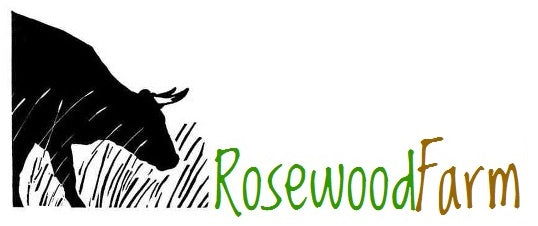
Conservation Grazing - What is it? And why you should care!
You may have heard us talk about ‘Conservation Grazing’ in the past and not be exactly sure what it involves. In the simplest terms conservation grazing is the keeping of animals with the primary objective being the management of a wildlife habitat, as opposed to rearing for meat or dairy production.
The process involves raising animals on the land in a way that mimics once common farming methods in order to preserve or recreate biodiverse grassland habitats. These methods have fallen out of favour over the years as farming techniques have changed. With new machinery, chemicals and breeds of livestock we have been able to produce food which better matches the long supply-chain, convenience markets of the modern world. The problem is that the rate of change has been so rapid that evolution hasn’t been able to keep pace and an overall loss of biodiversity (plant, insect and animal life) is inevitable.
The back to nature approach also has one other major obstacle - us. At the dawn of farming there were just 5 million people on the planet and the first cities were no more than large villages of today. Aside from food production we have greatly changed the landscape in a way that we aren’t willing to sacrifice with housing, drainage, roads and other infrastructure that would also need to be removed to recreate nature as it was.

Conservation efforts therefore tend to focus on preserving and linking up the small pockets of habitats which remain in the modern landscape. The majority of species, although threatened, do still exist and are able to repopulate suitable areas when available. Humans have used animals as a source of food, power and many different materials throughout history so it is no wonder that so many habitats have been shaped by livestock over millennia.
It’s easy to forget that prior to the industrial revolution the only way people could travel or move things over land beyond a walking pace was by animal power. Cultivating the land & moving goods all involved oxen, trained cattle, and later horses to provide the motive power. This was renewable energy but it did require lots of grazing for the many cattle and horses, which had a profound effect on our landscape. The land was also a lot wetter in the days before mass drainage and suitably dry arable land was in short supply. Fortunately grazing animals were able to utilise wetter or seasonally flooded grazing lands that would be unsuitable for cultivated crops.
Grazing; the eating of the leaves by either nibbling or ripping (depending upon species) by the animal allows light to reach the ground. New seedlings and less competitive grasses and wildflowers then stand significantly more chance of thriving. Many ground nesting wild birds such as lapwing require short, open grasses in which to nest and rear their young and hares in particular favour the fresh, nutritious growth to feed on throughout the year.

Trampling; the parts of the plant that aren’t eaten are crushed by the weight of the animals walking over them. This also helps to allow more light to reach the ground surface and ensures that dead and decaying matter is pressed into contact with the ground. Invertebrates and soil microbes can then more easily consume the plant and incorporate the important carbon element into the soil.
Dunging; the indigestible parts of the plants pass straight through the animal to be deposited on the ground. In addition to recycling nutrients back into the soils for subsequent plant growth, dung piles are also home to over 250 different invertebrate species in the UK. Animals which are not routinely treated with insecticides to control internal parasites produce much healthier dung with more insects that provide food for many birds,bats and larger mammals such as badgers and foxes.

A greater variety of different sward heights and types are created by animals than by mechanical cutting and changes in the species, timing and duration of grazing are all used to produce the desired effect for wildlife. Animals which are perfectly adapted to grazing are much more efficient and the sheer scale of the task means that there aren’t enough human volunteers to manage the sites by hand.
At Rosewood we have ponies, goats and sheep used in conservation grazing but the stars of the show are cattle. Due to the way they graze, and their size, cattle are best suited to grazing and trampling some of the roughest, overgrown pasture & turning it back into productive, biodiverse habitat. Ponies and sheep nibble rather than rip the foliage with their tongues so they are better suited to fine tuning the shorter swards after the cattle have passed through.

Grazing animals tend to breed each year and numbers fluctuate on an annual basis through a combination of predation and shortages of fodder in winter. This ensures that only the fittest animals go on to breed the next generation. As farmers we are more protective of our animals than mother nature, managing their grazing and making hay to ensure that they can survive the winter and create a surplus. Unfortunately cattle numbers here in the Lower Derwent Valley have dropped significantly over the past decade as eating habits have changed and farmers have found it more difficult to justify keeping livestock. Unfortunately this has had a knock-on effect on the wildlife value of the meadows.
Increasing biodiversity remains the primary goal for conservation grazing and provides the greatest amount of satisfaction but unfortunately satisfaction alone doesn’t provide for the upkeep for the herd. To enable this to continue we sell meat and other produce to help fund the whole process and the more meat we sell, the more habitat we can maintain. You can do your bit for nature without even leaving your home. It really is that simple!





